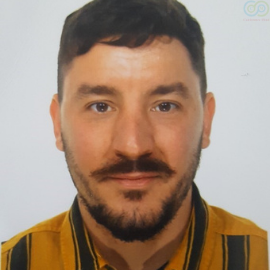Agenda
Conference Schedule
Day 1 full schedule
July 12, 2021 @ 00:00 - 00:00
Nanomaterials modified electrochemical sensors for the analysis of biological samples from patients with different disease: A Decade Study (2010 -2020)

Sunita Bishnoi
ProfessorVivekananda Global University
India
ABSTRACT
Determination of biomolecules and drugs in human body fluids is of great importance for the early screening of diseases (biomedical diagnostics), point-of-care testing, sports doping cases, and pharmaceutical applications. Although, translating the biological information to a simply processed electronic signal is not easy because of the complexity of connecting an electronic device directly to a biological medium. Electrochemistry based voltammetric methods have been increasingly used to deal with this challenge due to their high sensitivity, selectivity, low-cost, and fast analysis time. Electrochemical sensors offer a striking alternate to conventional methods for the study of biological samples due to their ability to translate biological events directly into an electronic signal. The surface morphology that connects the sensing part to the biological sample (at the nanometer scale) plays a key role in the signal transduction. Nanomaterials-based sensing systems using fullerenes, carbon nanotubes, metal nanoparticles, and surfactants present an extra possibility for signal amplification hence, improves the analytical performance of sensors. Nanomaterials also enable functional tenability, enhance the electron transfer rate, and can self-assemble. Additionally, nanomaterials have improved conductivity and stiffness, novel electrical and catalytic properties that increase sensitivity, selectivity, and versatility of the detection system. In the present study, the developed sensing systems are well capable to determine a range of clinically important molecules like amino acids, bronchodilators, nucleic acids, steroids, neurotransmitters, pharmaceuticals, and doping agents in various sensing media, ranging from buffers to complex matrices such as urine and blood plasma samples. In the proposed work, the real biological samples from patients with different diseases, including hepatocellular carcinoma, depression, diabetes, angina, asthma, pregnant women at risk of premature delivery, smokers, and athletes abusing doping agents have been analyzed. The proposed voltammetric methods using nanomaterial-based sensors are simple, fast, handy, and economic, therefore, can be used easily for on-site applications. The objectives of the present study are to highlight the applications of these developed sensors in the medical and pharmaceutical fields. The top results of the proposed work reached up to now are generating the basis for advanced applications.
eCovSens-ultrasensitive novel in-house built printed circuit board based electrochemical device for rapid detection of nCovid-19 antigen, a spike protein domain 1 of SARS-CoV-2

Sonu Gandhi
ScientistNational Institute of Animal Biotechnology
India
ABSTRACT
Severe acute respiratory syndrome coronavirus 2 (SARS-CoV-2 or nCovid-19) outbreak has become a huge public health issue due to its rapid transmission and global pandemic. Currently, there are no vaccines or drugs available for nCovid-19, hence early detection is crucial to help and manage the outbreak. Here, we report an in-house built biosensor device (eCovSens) and compare it with a commercial potentiostat for the detection of nCovid-19 spike antigen (nCovid-19Ag) in spiked saliva samples. A potentiostat based sensor was fabricated using fluorine doped tin oxide electrode (FTO) with gold nanoparticle (AuNPs) and immobilized with nCovid-19 monoclonal antibody (nCovid-19Ab) to measure change in the electrical conductivity. Similarly, eCovSens was used to measure change in electrical conductivity by immobilizing nCovid-19 Ab on screen printed carbon electrode (SPCE). The performances of both sensors were recorded upon interaction of nCovid-19Ab with its specific nCovid-19Ag. Under optimum conditions, the FTO based immunosensor and eCovSens displayed high sensitivity for detection of nCovid-19Ag, ranging from 1 fM to 1 μM. Our in-house developed device can successfully detect nCovid-19Ag at 10 fM concentration in standard buffer that is in close agreement with FTO/AuNPs sensor. The limit of detection (LOD) was found to be 90 fM with eCovSens and 120 fM with potentiostst in case of spiked saliva samples. The proposed portable eCovSens device can be used as a diagnostic tool for the rapid (within 10-30 s) detection of nCovid-19Ag traces directly in patient saliva in a non-invasive manner.

Sallahuddin Panhwar
Assistant ProfessorBalochistan University of Engineering & Technology
Pakistan
ABSTRACT
The climate change is significantly evolving novel microbes in the environment. In addition, nanoscience is advancing promptly to provide environmentally friendly engineering solutions to detect these microbes (i.e., pathogenic bacteria and viruses) in blood and water. There is a need to develop smart and efficient nano-biosensor to detect the pathogens, Escherichia coli (ATCC 47076), in the drinking water to protect the public against the diseases like hemolytic uremic, gastroenteritis, and acute diarrheas. This study aims to construct an engineered dispersible electrode to enumerate Escherichia coli (ATCC 47076). The electrode is based on biotin-antibody functionalized by metal-organic frameworks (MOFs) and gold nanoparticles AuNPs. The immunomagnetic separation strategy enables detecting bacteria in water samples fast and efficiently. Functionalized magnetic MOFs serve as a capture probe and Spectro-electrochemical label. The stripping differential plus voltammetry (SDPV) and cyclic voltammetry (CV) techniques were used to quantify the different concentrations of the E. coli. Synthesized dispersible electrode was found competent to electrochemically detect the E. coli at 101 to 107 CFU/mL in water and blood with high accuracy R2 = 0.992 and 0.921 respectively and a limit of detection (LOD) of 10 colony forming units CFU/mL. The selectivity of the method was tested with Salmonella typhimurium, K. aerogenes, E. coli O157: H7. The results suggest that the developed method is applicable for real-time detection of E. coli ATCC 47076 in water and blood samples, and offers advantages such as large dynamic range, high sensitivity, high selectivity, and short analysis time (5 min). As for as we know, this is the first report to display the potential of the AuNPs and MOFs nanoparticles based dispersible electrode for the detection of targeted E. coli from water and blood.

Makar Sardushkin
ProfessorMendeleev University of Chemical Technology
Russia
ABSTRACT
We propose a «genome-inspired design» principle for constructing robust sensors that enable tracking fast and subtle pH changes in living cells. The sensors comprise i-motif (C-quadruplex) DNA sequences from the promoters of human neurodegeneration/oncogenesis-related genes as sensitive elements and terminal FRET pairs of fluorophores as reporter groups. To fine-tune the sensor working range for accurate intracellular pH measurements, we performed rational selection of the i-motifs, while known orthogonal approaches make use of additional (stabilizing) structural modules, which yields bulky and relatively slow-responding constructs. To paraphrase the French sculptor August Rodin, we simply removed everything but the essential parts from the available ‘bulk’. The minimalistic design of the new sensors ensured their fast kinetics. The particularly fast responses (tau1/2 = 0.3-0.4 s) were obtained upon pH jumps of 6.7→7.3, suggesting sensor applicability for monitoring such native processes as steady-state pH recovery after acidification upon neuron activation. The unexpectedly efficient transport of our top sensor to the cell nucleus and its favourable kinetic characteristics imply its potential usability for visualization of quantification of intranucleous proton dynamics. It is tempting to speculate that i-motifs found within genomic DNA sense proton dynamics analogously to the reported synthetic constructs and respond by modulating gene expression. To paraphrase Rodin once again, we ‘rediscovered rather than invented’ DNA i-motifs as fast and sensitive molecular biology tools.
A novel fluidic microcell: a new concept of continuous flow analysis for electrochemical measurements

G. Pezzotti Escobar
ResearcherInstitute for Microelectronics and Microsystems
Italy
ABSTRACT
In the area of the electrochemical biosensors, real-time measurement systems are more and more required for different types of matrices such as water, nutrients, etc. Such a kind of measurement, can be realized making as automatic, sensitive and fast as possible the system. In this context, fluidic mechanical microcells, used for dynamic measurements[1-3], are strongly preferred, compared to microcells designed for static measurements. They show indeed an increase of the sensitivity, in some cases up to 5 times, and the possibility of being used to develop automatic devices or early warning systems, where no or sporadic human intervention is needed. Robustness and versatility are strongly required for such a kind of cells, also in order to justify their higher cost. For this reason, a new, versatile, and robust microcell allowing the insertion of different commercial types of screen-printed electrodes, has been designed, built and tested. The new geometry enables continuous measurements under 50 microliters per minute [2], eliminating air bubbles, and allowing sample's light excitation for light driven experiments. The cell has been made by 3D printing technology with PLA material, which generates extremely low costs; the closure of the microcell is magnetic. The cell has been designed within the research project "FACILE", funded by Lazio Region, for the development of an all-in-one, multitransduction electrochemical platform able to perform amperometric[3], conductivity and impedance measurements, and useful for environmental, agri-food or biomedical applications.

Stefano Cinti
Assistant ProfessorUniversity of Naples “Federico II”
Italy
ABSTRACT
Despite substantial advances in sensing technologies, the development, preparation, and use of self-testing devices is still confined to specialist laboratories and users. Decentralized analytical devices will enormously impact daily lives, enabling people to analyze diverse clinical, environmental, and food samples, evaluate them and make predictions to improve quality of life, particularly in remote, resource-scarce areas. In recent years, paper-based analytical tools have attracted a great deal of attention; the well-known properties of paper, such as abundance, affordability, lightness, and biodegradability, combined with features of printed electrochemical sensors, have enabled the development of sustainable devices that drive (bio)sensors beyond the state of the art. Their blindness toward colored/turbid matrices (i.e., blood, soil), their portability, and the capacity of paper to autonomously filter/purge/react with target species make such devices powerful in establishing point-of-need tools for use by non-specialists. Depending on analytical requisites, different types of paper (filter, office) and configurations (1D, 2D, 3D) can be adopted. A wide overview regarding application ranging from DNA to heavy metals, through pesticides detection will be provided, with the aim in showing the potentialities of paper-based electrochemical biosensors for improving society involvement in monitoring.

G. Pezzotti Escobar
ResearcherInstitute for Microelectronics and Microsystems
Italy
ABSTRACT
A new software for biosensing applications involving microrganisms such as bacteria or microalgae, and biomolecules such as proteins, enzymes or DNA, has been developed, within the project "FACILE", to support a multitransduction biosensor platform able to detect toxic compounds in agri-food matrices. The software can manage optical, electrical or frequency measurement, allowing the setting of any variable parameter (current, potential, equilibration time, light excitation intensity, dark time, etc.) and the type of measurement to be performed[1-3] (amperometry, conductivity and impedance). It can also manage the setting of temperature inside the measurement cell (useful for the maintenance of microrganisms employed in the sensing process) and the flow of samples and measuring buffers through the peristaltic pump, with repetition cycles for each experiment[2]. The other peculiarity is the presence of mathematical tools (enabling the calculation of different factors, such as maximum and minimum averages), and various functions (data saving, reopening, overlaying). The software, originally developed for an electronic card of the Biosensing Technologies company, is a user friendly interface using a DAS (Digital Analog System), which allows the combination with other low-cost cards (e.g. Arduino and Raspberry)[1], using serial connections.

Giuseppe Arrabito
Post-Doctoral ScientistUniversity of Palermo
Italy
ABSTRACT
This seminar aims at exploring the enormous potentialities of microchannel cantilever spotting, an emerging approach for the fabrication of patterns onto solid surfaces, ultimately resulting in applications in biosensors, drug screening, DNA analysis. Differently from conventional dip pen lithography in which the ink reservoir is confined to the tip surface, and then ink reloading is needed during ink deposition, in μCS the deposition tool features a microfluidic channel that connects an ink reservoir to the apex of a cantilever that resulting in a split gap (the system is defined as Surface Patterning Tool).1 In μCS, the reservoir allows for constant liquid refilling in the microchannel, permitting the print of several thousand spots without reloading.2 This work will firstly explore the mechanism of the deposition μCS of DNA-rich inks onto glass surfaces by investigating upon the effects of glycerol concentration, tip-surface dwell time and relative humidity. Interestingly, the lateral spot size well follows reported models for liquid inks deposition onto solid surfaces. Secondly, the same μCS will be employed for printing DNA-rich inks onto porous solid supports for the fabrication of microarrays. In particular, the imbibition of aqueous droplets on the femtoliter scale containing DNA molecules on nylon was performed at optimal conditions. The effects of the composition of the molecular ink and the deposition conditions have been analyzed, showing that the deposited molecules can be employed as high-sensitivity sensors for complementary fluorescent DNA sequences.
Production and characterization of Chlamydomonas mutants for optical and electrochemical bio-sensing

Maya Dimova Lambreva
ResearcherInstitute of Crystallography
Italy
ABSTRACT
Photosynthetic microalgae are among the most preferred microorganisms for environmental monitoring and screening of food and agricultural products for hazards compounds. The unique features and structural constituents of the photosynthetic systems make them a suitable sensing element, largely due to their ability to conduct charge separation and electron transfer sensitive to the presence of different classes of pesticides, heavy metals, some drugs and explosive compounds. This research presents strategies for production and characterization of mutants of Chlamydomonas reinhardtii suitable as stable and sensitive bio-recognition elements in the optical and electrochemical sensing of herbicides. Novel bio-sensing elements with enhanced stability and tolerance to free-radicals-associated stress were generated by an in vitro directed evolution strategy targeted at the D1 protein of the photosystem II reaction center of C. reinhardtii using exposures to ionizing radiation as selection pressure [1]. In parallel, computational methods were exploited to identify single aminoacidic substitutions in the D1 protein conferring an increased affinity to the herbicide atrazine [2] and prove of concept was achieved by studies on de novo generated D1-site-directed mutants. This work was supported by COST Action TD1102 and Lazio project FACILE, contract n. 85-2017-15256.

Giuseppe Maruccio
ProfessorUniversity of Salento
Italy
ABSTRACT
The development of lab-on-chip devices attracted large interest for detection of specific analytes/markers, cellular studies, drug screening as well as food and environmental monitoring. In this respect, electrochemical impedance spectroscopy is a powerful tool. Here the development of a multipurpose biochip with integrated microfluidic components is described. Specifically, the layout consists of various sensing areas, each one including an array of transducers (gold interdigited electrodes), while microfluidic channels are used for the delivery of functionalization and sample solutions into the chambers. Such biochips are first demonstrated to be suitable for viability assays, cytotoxicity tests and migration assays on cell populations[1]. Then other applications are discussed concerning the ultrasensitive (pM) detection of biorecognition events in flow immunoassays, such as in the case of cholera toxin in solution or cancer biomarkers in siera [2]. Our publications demonstrate that these biochips are very suitable for clinical analysis, being faster and more reproducible than traditional techniques. In particular, our attention was so far focused mainly on cancer diseases. For example, by means of appositely developed biochips, we assessed the presence of autoantibodies against Ser-419-phosphorylated ENOA in sera originating from patients with pancreatic ductal adenocarcinoma (PDAC) [3]. Biochip results are in agreement with those from traditional techniques, such as ELISA and Western Blot, but measurements are much more sensitive and specific increasing the possibility of PDAC diagnosis. Similar chips also allowed to evaluate the free-to-total PSA ratio useful for screening of prostate cancer risk[4] and retinol binding protein 4 for early management of type II diabetes[5]. On a different approach, these biochips were modified to enable automatic tests to quantify the invasive potential of cell lines by detecting the migratory activity of hepatocellular carcinoma (HCC) cells as a function of microenvironment [6]. Moreover, they were also employed for the simultaneous detection of multiple lower genital tract pathogens[7]. Similar biochips were applied for food and environmental monitoring. For example, we reported a portable gliadin-immunochip for contamination control on the food production chain which was validated for both liquid and solid food matrixes by analysing different beers and flours[8]. In a different study, the biochips were employed to detect food pathogens, such as Lysteria monocytogenes and Staphylococcus aureus[9]. More recently, they were applied for rapid assay of Xylella fastidiosa subsp. pauca strain CoDiRO, a pathogen responsible for Olive Quick Decline Syndrome (OQDS), which is strongly threatening the agricultural-based economy of South Italy and making its typical landscape collapse[10]. Presently, we are also integrating more advanced microfluidic components and monolithic valves for fluid handling using thermo-responsive hydrogels, as well as other read-out approaches for increasing sensitivity in the case of small molecules thanks to magnetoresistive, plasmonic or SAW transducers[11, 12].
New multi-parametric thermo-fluid-dynamic sensor for the evaluation of thermal conditions in hospital application

G. Pezzotti Escobar
ResearcherInstitute for Microelectronics and Microsystems
Italy
ABSTRACT
A new multiparametric sensor that measures three of the four environmental variables of thermo-hygrometric comfort has been built, calibrated and tested. It is based on the thermal and fluid dynamic behavior of a flat heated surface in transient state. The sensor consists of a glass substrate with a gold layer deposited on it. It is used both as a heater by means of an electric current flowing through it, and as a temperature sensor. The air temperature is measured through the electric resistance of the gold deposit, detected from a so low current to avoid self-heating, while, during the first 20 seconds of heating, the convection heat transfer coefficient is measured and the air speed evaluated from it. The mean radiant temperature is measured by the difference between the results of the heat transfer coefficient of the two parts of the sensor: the one blackened and the other bright as after the gold deposition. The tests show good accuracy in the determination of the temperature and the other quantities. In addition, a more advanced version of the multi-parameter sensor, wearable and self electrically fed, was realized connecting it to digital system analogue to the one used during tests. A software, has been developed in LabView programming environment on purpose, defines the thermo-hygrometric comfort value, as described in the Fanger equation.

Zulfiqur Ali
Director HealthcareTeesside University
United Kingdom
ABSTRACT
Microfluidics has an important role to play in the diagnosis and management of diseases (1-3). The presentation will highlight the use of Cavity Enhanced Absorption (CEA) and impedimetric detection for use within low cost point-of-care diagnostics. In CEA detection the high sensitivity is achieved through increasing the pathlength by locating the sample between two highly reflective dielectric mirrors. The light reflects between the two mirrors to form an optical cavity which magnifies the optical absorption effect (4, 5). A very small amount of light exits from the mirror and this is measured to give the CEA signal. Impedimetric detection has the advantage as a potentially label-free approach for monitoring ligand receptor binding (6). The use of microfluidics for the development of low cost device for carrying out culturing of multiple cell lines for high throughput screening of anti-cancer compounds and for use in the optimisation of protein production for therapeutics will be discussed (7).

Janet Meiling Roveda
ProfessorUniversity of Arizona
United States
ABSTRACT
Noise in wearable sensors, user errors in connecting these sensors, and data process inaccuracy due to the large volume of data (over 8 hours of data with hundreds of Mbytes) lead to high false negative rate in wearable sensor based screening and diagnosis. False negative rate, high cost, un-user-friendly design are the three major factors that prevent patients from further treatments. In this presentation, we present a new machine learning and Internet-of-Things (IoT) based diagnostic framework. We target to provide a user-friendly solution and solve the high false negative rate. This talk discusses two new designs: 1) a new skin-compliant wearable sensorwhich provides high precision sensor data with low power consumption; 2) a new machine learning and cloud based analysis algorithm, which automatically analyze wearable sensor data. The new framework collects biological information such as ECG, oxygen saturation, motion, respiratory effort, etc. The deep learning algorithm can discover unseen patterns and improve the performance with increasing amounts of available data thus improve recognition accuracy.

Janet Meiling Roveda
ProfessorUniversity of Arizona
United States
ABSTRACT
Over 1.5 million concussions sports- and recreation-related concussions happen each year, and 5 of 10 concussions go unreported or undetected. Concussions are especially prevalent in organized high school sports, such as football and soccer, and a concussion places a student-athlete into at a greater risk of future concussions. With many aspects of medicine transitioning into digital forms, finding ways to digitize any phase of the concussion cycle -- screening, diagnosis, treatment, recovery, and prevention -- can improve the overall speed, accuracy, and efficiency of that phase and the entire cycle and are necessary for the progression of concussion and head injury research. The SCAT5 (Sport Concussion Assessment Tool 5th Edition) is a standardized tool used by licensed medical professionals to evaluate a sustained concussion for athletes ages 13 and above or used to obtain baseline data for athletes. Currently, the paper-based version is standardly used by medical professionals. The digital SCAT5 addresses the primary issues found in the paper version and can lead to advancements in the field of head injury research. Standardizing a free and improved digital copy of the SCAT5 can benefit the livelihood of athletes participating in concussion-risk sports.

Siteng Chen
Research AssistantUniversity of Arizona
USA
ABSTRACT
Time-lapse microscopy has been widely used in biomedical experiments because it is able to visualize molecular activities in living cells in real time. Researchers convert images into compact features by conducting cell lineage analysis, including cell tracking, mitosis detection and apoptosis detection. Recently, many cell tracking tools have been developed to avoid this labor-intensive analysis task, but require cell masks which are barely annotated in biomedical experiments. Automatic lineage analysis without cell masks remains unexplored. In this work, we propose a spatio-temporal feature based deep neural network (STN) to track target cells and predict biological events using the initial coordinates directly. The STN extracts spatio-temporal features from microscopy images by leveraging our convolutional long short-term memory (ConvLSTM) based core block, and then predicts the cell locations and biological events by using a multi-task manner. Through benchmarking, we show STN outperforms state-of-the-art cell tracker on datasets with four different types of cell: HCT116, U2OS, MCF7 and HeLa. In addition, STN can be adapted to new biological event detection tasks by appending task-specific layers and required minimal training datasets.

Janet Meiling Roveda
ProfessorUniversity of Arizona
United States
ABSTRACT
Parkinson’s disease (PD) is the second most common neurodegenerative disorder affecting more than 10 million people worldwide and approximately 60,000 new cases are diagnosed annually in the U.S[1, 2]. Though the cause of the PD is still unknow, PD can be characterized by the loss of dopaminergic neurons in the substantia nigra pars compacta [3], leading to a decreased dopamine levels in striatum[4]. Through wearable sensor, this study analyzes heart rate variability (HRV) to reflect the interplay between sympathetic and parasympathetic nervous systems[5], and reveals the correlation between dopamine transporter (DaT) SPECT(DaTscan) and HRV measurements among PD patients. As shown in Fig. 1, lower HF power was associated with less asymmetric caudate. In term of both HF power and caudatus asymmetry, Group A(Mean = 44.12, SD = 12.207; and Mean = 0.052, SD = 0.050, respectively) was significantly lower than Group B(Mean = 125.333, SD = 20.902; and Mean = 0.165, SD = 0.045, respectively), p-value = 0.0165, 0.0456 respectively



